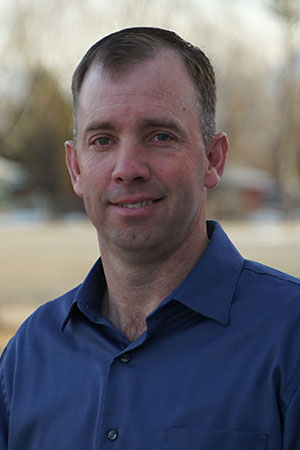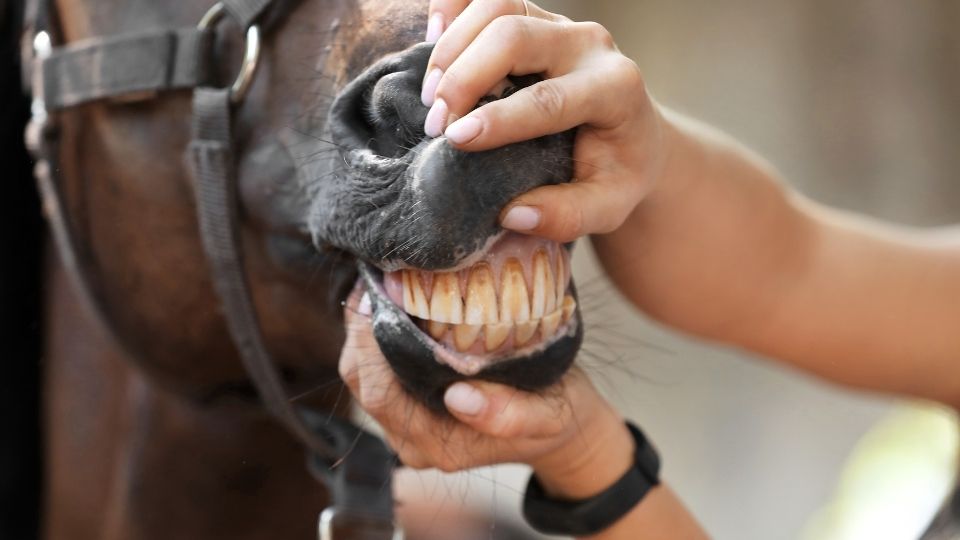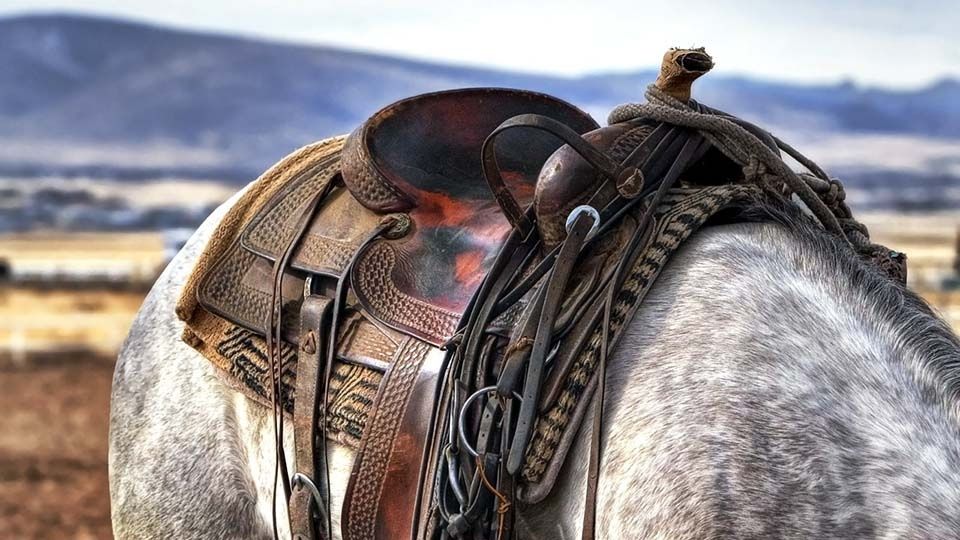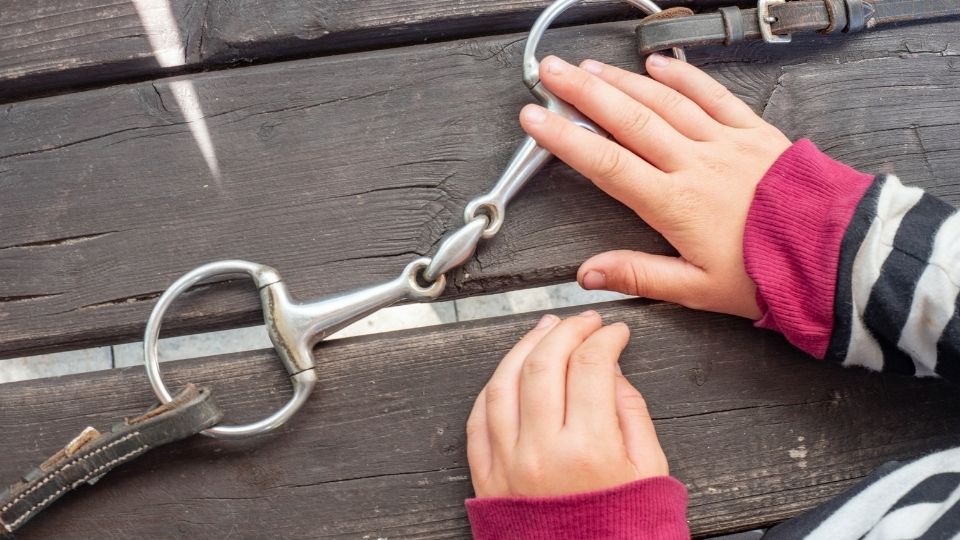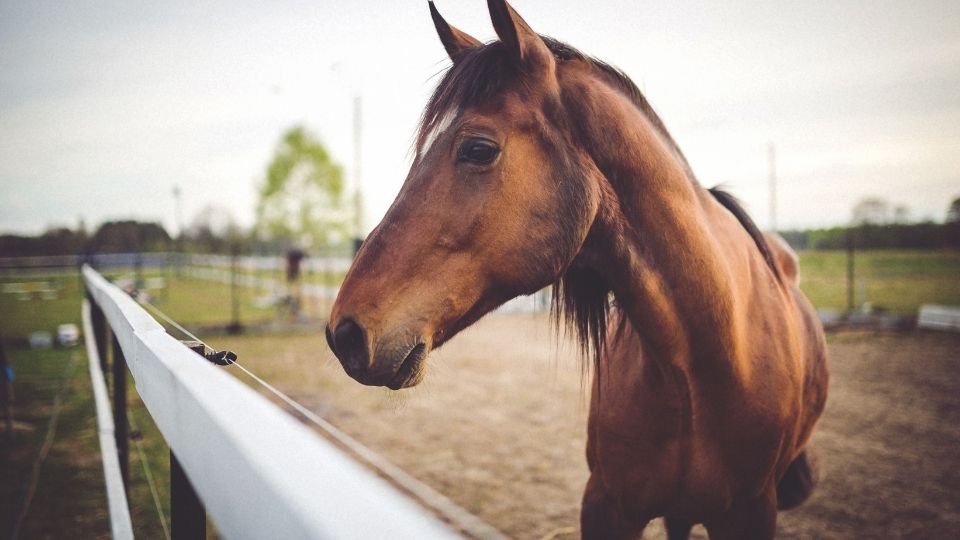Equine Dental Care
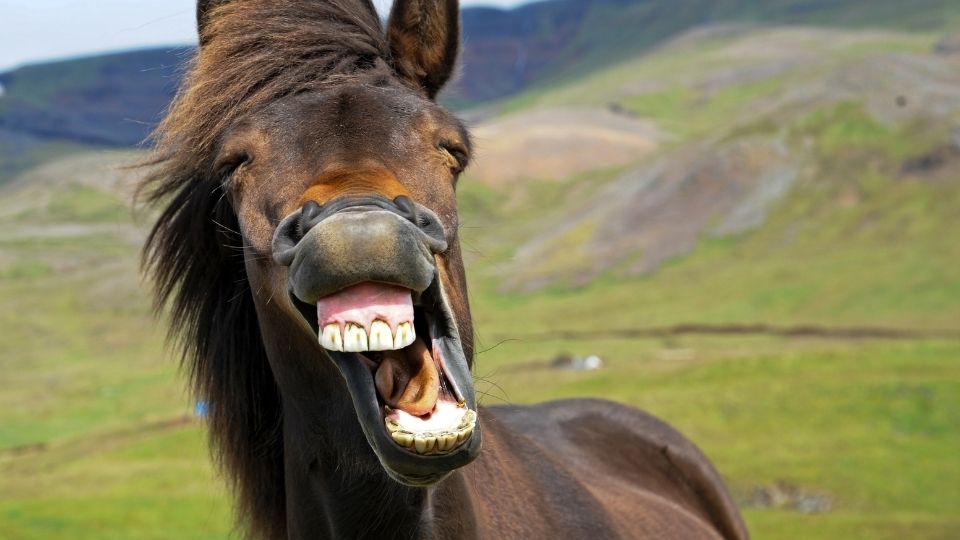
Just as people visit the dentist on a regular basis to maintain proper dental health, horses also require regular dental care. Horses should have at least annual dental check-ups to maintain proper alignment and remove points and hooks.
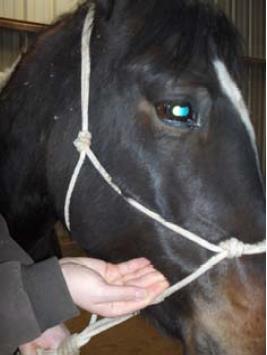
horse’s molars.
Why is dental care required and what is needed?
Horses have hypsodont teeth that are deep rooted and have about 3 inches of reserve which continues to erupt out of the horse’s jaw as the grinding surface is worn away. The horse chews laterally, tearing forages apart for better digestion. If its teeth are not wearing evenly, or points have not been removed, this lateral movement can be inhibited, causing the horse to chew more vertically. Chewing in a vertical manner does not allow for proper mastication of forages, and thus, nutritional benefits from feed will be lost.
Why do domesticated horses need dental care when the wild horses live without it?
While wild herds live in a more natural environment grazing coarse grasses and shrubs, they also would benefit from dental care. All animals with hypsodont teeth develop points, hooks, and irregular wear problems. Today, domesticated horses live much longer and healthier lives due to veterinary care. Domesticated horses may require additional dental care due to the types of feed eaten and the height at which fed. For example, domesticated horses need more attention to overgrowth of their incisors where wild horses tend to wear these down. In natural grazing environments, horses will eat with their heads below shoulder level while in many stables, horses are fed at higher levels. Due to this unnatural height, hooks can develop on the upper first molar as the lower jaw is shifted back, although hooks develop for other reasons as well.
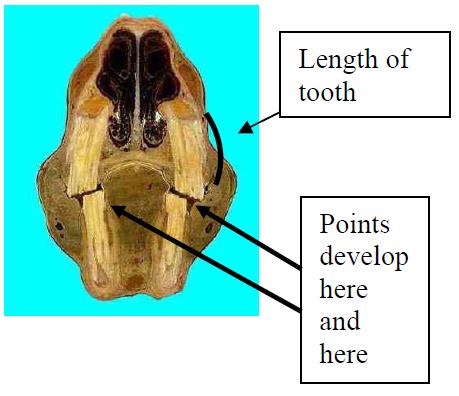
horse's mouth.
Signs of Dental Problems
Knowing signs of dental problems is an important part of horse ownership. By the time you see many of these signs, the horse has been having problems for some time. Some signs of problems include:
- Eating more slowly due to mouth pain
- Tipping the head to one side to allow chewing food on only one side of the mouth
- Dropping food from the mouth while eating
- Resisting the bridle and bit
- Tossing the head while bridled
- Mouthing the bit
The upper jaw is wider than the lower so the upper molars extend out over the lower molars. On the outside of the horse’s face, using fingers, push the skin against the molar edge and run your fingers the length of the molars (Figure 1). This will allow you to feel existing points. If the points are sharp, the horse may also react by moving the head away. Points cause more of a problem with domesticated horses because halters and bridles push sensitive tissues against them.
Dental Care of Points, Hooks and Jaw Alignment
An equine veterinarian or equine dentist should evaluate the horse’s mouth on a regular basis. A dental evaluation includes looking at the incisors and molars for proper alignment and checking for points and hooks. The horse’s teeth need an opposing surface for continued wear and a smooth surface. Without an opposing surface, teeth will continue to erupt, creating a long, sharp edge that could irritate the tongue, cheek tissue, or gum line.

before filing.
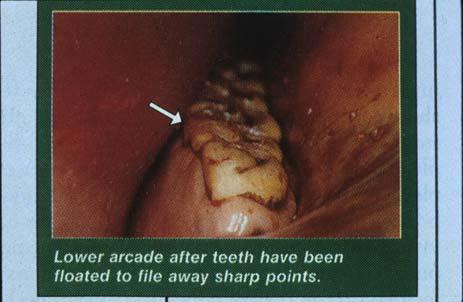
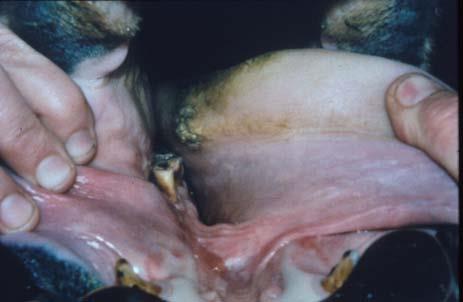
Points develop due to the unopposed dental surfaces on the outside of the upper molars and inside of the lower molars (Figure 2). Points can be easily filed down with hand or electric tools (Figure 3a, 3b). Left untreated, points can cause sores on the tongue or cheek tissue (Figure 4).
Hooks found on the front edge of the first molar or rear edge of the last molar (Figure 5) can be caused by misalignment of the jaw. If not filed down, these hooks can continue to lengthen until they cut into the opposing gum tissue. Misalignment of the jaw requires more extensive attention to realign the jaw and teeth (Figure 6).
Other dental problems to address include step mouth, wave mouth and tooth abscesses. Step mouth occurs when one tooth is longer than its opposing tooth as shown in Figure 7. Wave mouth (Figure 8) is another dental concern that should be corrected with dental care. Each of these dental problems can lead to more serious problems in the way the horse carries a bit, or may inhibit the horse’s natural chewing process.
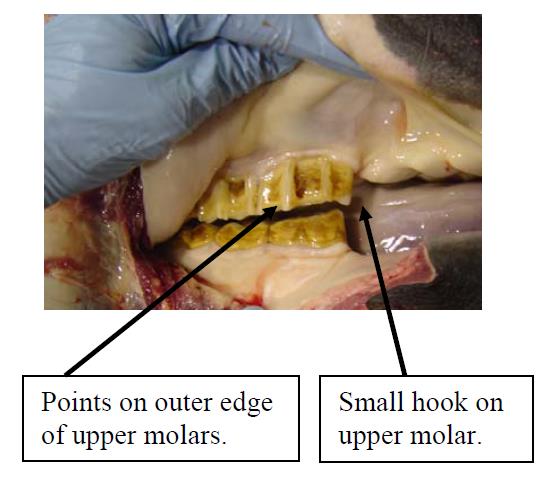
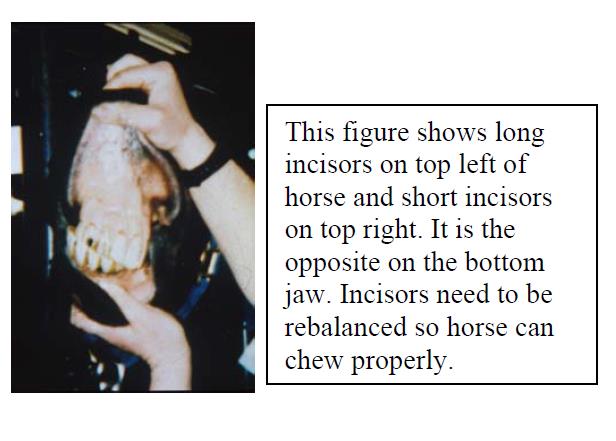
Another dental procedure is called the bit seat (Figure 9) that is a modification of the first cheek teeth that improves performance in most bitted horses. This allows the bit to sit more comfortably in the mouth, preventing pinching of skin or hanging up of the bit.
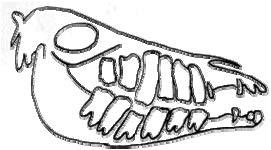
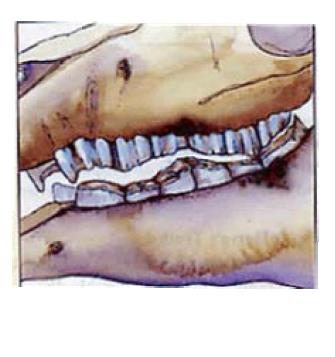
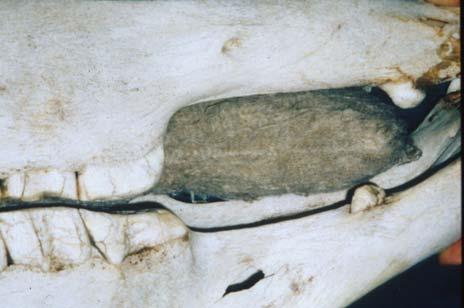
front edge of the first molar is rounded back
to better accommodate the bit.
Regular dental care should begin during the yearling year. Until the age of five, the horse is going through tremendous dental changes with loss of baby teeth and eruption of permanent teeth.
Address dental problems when detected. Some misalignment problems can be corrected surgically in young foals. During this period, the horse may need dental attention more than once a year. High performance horses will sometimes have dental care several times a year to prevent them from creating behavioral issues. From 5 years of age through early teens, an annual dental care program may be sufficient. As the horse moves into old age, it may require more frequent care. The horse may lead a more productive, longer life when dental issues are properly addressed.
References
- Jeffrey, D. (1996). Horse dentistry, the theory and practice of equine dental maintenance. Norfolk Printing Co.
- Evans, J.W. (1981). Horses. San Francisco: W. H. Freeman and Company.
Revised May 2020
Utah State University Extension
Peer-reviewed fact sheet
Authors
Revised by Karl Hoopes, DVM, Utah State University Equine Extension Specialist
Originally written by Patricia A. Evans, Ph.D., and Diana Witkopf, DVM
Related Research


